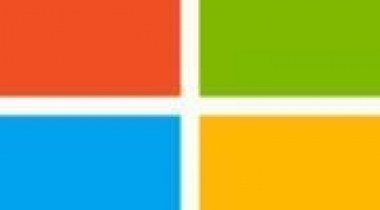The Nucleus RTOS is deployed in over 3 billion devices and provides a highly scalable micro-kernel based real-time operating system designed for scalability and reliability. System reliability can be improved using lightweight memory partitioning support that can function with or without MMU/MPU assisted protection in systems spanning the range of aerospace, industrial, and medical applications. Developers can make full use of multi-core solutions across the spectrum of Microcontroller and Microprocessor SoCs using SMP and AMP configurations to integrate multiple operating systems. To meet the power requirements of todays advanced designs, engineers can ease development with integrated power management in Nucleus that includes support for DVFS, deep sleep modes, and power/clock gating.
Nucleus RTOS
Customer Reviews
Nucleus RTOS Reviews
Sobin T.
Advanced user of Nucleus RTOSWhat do you like best?
Best part is it modularity and the support for priority inheritance. The entire system is modularized and this helps in easy porting to different Modules.
The file system provided by the nucleus was good in the sense it supported the Power fail system it was very important for the embedded system and this helped in saving the contents when the power goes and this helped us a lot.
Also the drivers were cleanly written and the test cases was very easy to develop. There was also support for the IOT based system where the support for POSIX was there. When you have support for POSIX this means your software will readily blend to it , Most of the the software is written in linux and this means that the Code will inherently ready to blend with the Nucleus RTOS
Nucleus SmartFit from Mentor Graphics Corporation is a binary version of the Nucleus RTOS optimized to fit the limited internal memory of 32-bit MCUs. Nucleus SmartFit includes Sourcery CodeBench development tools and provides developers with broad connectivity and power consumption options for developing products based on 32-bit MCUs.
Included in the Nucleus RTOS is the Power Management Framework with which developers can maximize battery life in power-efficient applications. In addition to Sourcery CodeBench development tools, the Nucleus SmartFit platform can be configured to include I/O and bus support, file systems, networking IPv4/IPv6, wireless, and USB functionality. The Nucleus SmartFit product is suited for medical and personal healthcare, smart grid, industrial sensors, and white goods products..
Open source toolchain experts providing toolchain commercialization, customization and support services enabling a wide variety of processor architectures and HPC accelerator offload support for over 20 years
-> High-quality open source commercial grade toolchains
GCC and LLVM based customized compilers and libraries
High Performance Computing enablement including accelerator offload support for GPU, multicore CPUs, DSPs, FPGAs and custom accelerators
What do you dislike?
The Debug agent is a bit slow and this creates problem. The BDI Agent provided is not that efficient.
The Boot loader provided by the Nucleus was not that easy to work with. We had to use trace 32 for this purpose and they will promote use to use the BDI agent please dont go with that.
The Debug agent is a bit slow and this creates problem. The BDI Agent provided is not that efficient.
The Boot loader provided by the Nucleus was not that easy to work with. We had to use trace 32 for this purpose and they will promote use to use the BDI agent please dont go with that.
The Debug agent is a bit slow and this creates problem. The BDI Agent provided is not that efficient.
The Boot loader provided by the Nucleus was not that easy to work with. We had to use trace 32 for this purpose and they will promote use to use the BDI agent please dont go with that.
The Debug agent is a bit slow and this creates problem. The BDI Agent provided is not that efficient.
The Boot loader provided by the Nucleus was not that easy to work with. We had to use trace 32 for this purpose and they will promote use to use the BDI agent please dont go with that.
The Sourcery code bench is a bit slow and this is not useful for debugging unlike the one given by the qNX
The RTOS was bit failed in priority inversion tests.
What problems are you solving with the product? What benefits have you realized?
We used Nucleus RTOS against QNX for cost point of view and on comparison for the basic sattelite phones both fared same
The problems included the Priority control for the threads running in the system and how to deal with it.
There were lot of drivers that need to be ported and we had a mentor graphics team delivering that this helped a lot. They had dedicated customer care teeam that helped in giving the drivers and the BSP packages to us. Also the drivers were clean written and we had to just port them and use them The test code we had to write using the drivers that was given to us.
Using OpenACC to exploit application parallelism with minimal effort
Extensive architecture support including ArmВ®, RISC-V, MIPSВ®, and POWERВ®
Integrated development tools with Eclipse-Based IDE
Support for rich UI graphics
File system support for many of the leading format types
Multicore Support includes xAMP and SMP support with rpmspg over virtIO and MCAPI for inter-process communication
POSIX support for application portability














